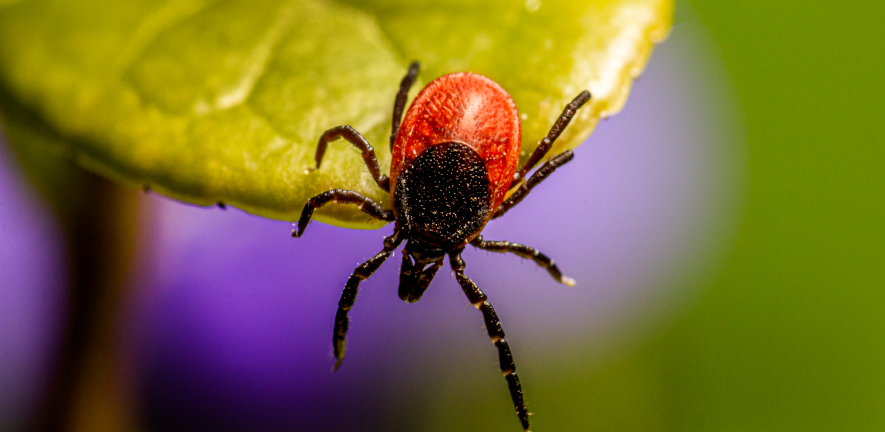
By Dr Jeanne Salje, Dr Marion England, Prof Mike Kelly, Dr Carmen Fernandez-Posada and Dr Lauren Maggs
Vector-borne diseases are caused by bacteria, viruses or parasites that are transmitted by arthropods such as ticks, mosquitoes, midges and rodents (that can be vectors and hosts). There is a wide range of vector-borne diseases that the public may have heard of, including Lyme disease, malaria, Dengue fever and bubonic plague. Annually and globally, spillovers of vector-borne diseases from animals into human populations claim over 700,000 lives, with many survivors suffering from the long-term consequences of the initial infection.
In September 2023, Dr Jeanne Salje and Dr Anna Protasio from the Infection and Immunity Research Theme in the School of Biological Sciences convened researchers from across the University of Cambridge with representatives from The Pirbright Institute, The UK Health Security Agency (UKHSA), the Animal and Plant Health Agency (APHA), and the British Trust for Ornithology. Together, they explored the Changing Landscape of UK Vector-Borne Disease. The broad interdisciplinary meeting was attended by a range of experts including ecologists, infectious disease specialists, cell biologists, geneticists, mathematicians, economists, geographers, policy advisors, and people with lived experience of the diseases. Professor Mike Kelly, Department of Public Health and Primary Care and former Director of the Centre for Public Health at the National Institute for Health and Care Excellence (NICE) considered the event was both important and timely. The need for an interdisciplinary approach and to engage directly with policy makers are paramount given the nature of the changing landscape of vector-borne infections. This was echoed by Dr Marion England, The Pirbright Institute, who said: ‘It was so valuable to have representatives of such diverse range of disciplines and perspectives, coming together to discuss the challenges we face from vector-borne diseases. The importance of communication across all stakeholders was clearly demonstrated, and how we can learn from each other to develop new strategies to emerging threats.’
The meeting consisted of engaging presentations from different organisations and discussions on the evolving scenario of vector-borne diseases in the UK. Highlights include the patient perspective provided by Dr Nicola Lawrence, which helped to ground the day in the real-world context. She discussed her own family’s experiences with Lyme disease and interactions with patients who have been diagnosed with other tick-borne diseases. Nicola highlighted the difficulties many patients experience with getting timely diagnosis and appropriate treatment due to a lack of awareness of tick-borne diseases amongst clinicians. She also raised the issue of under-reporting of these diseases in the UK and the impact this has on all aspects of disease management. Looking to the future Dr Nerea Irigoyen, whose research is focused on Zika virus, spoke about what we can learn from tropical viruses and what challenges we may face with our changing summers. In particular, she highlighted the possibility of Dengue virus being on our doorstep, with 2023 seeing an increase in cases in Europe, and Paris fumigating against the vector, the Asian tiger mosquito, for the first time.
Dr Nick Johnson, from the Animal and Plant Health Agency, then spoke about the need to distinguish the difference between endemic diseases and exotic diseases when considering how to manage vector-borne diseases in the UK. He also discussed the complex interaction between vectors and climate, and that the changes to disease burden seen due to climate change may not be negative – for example, prolonged periods of summer drought may cause a decrease in some vector species.
To end the day, Professor Ulf Büntgen from the Department of Geography described how tree rings can be used to track unusual cold and wet spells throughout the last 2000 years and how these reconstructed climate anomalies can give clues about the causes and patterning of historical plague outbreaks in space and time. The cold and wet spells tend to map to years immediately preceding larger plague outbreaks and likely affected both the natural wildlife reservoirs of plague as well as the human populations the bacterium affected. Professor Büntgen concluded his talk with a reminder that the story of climate impacting vector-borne disease is not a new one, but one we can trace back through time.
The following key messages emerged from the meeting:
- Vector-borne diseases don’t only affect human health but also pose a risk to wildlife, pets, livestock, and plants.
- A combination of interlinked factors such as globalisation, changes in land use and climate are affecting the distribution, behaviour and abundance of many arthropod vectors and therefore associated vector-borne disease risk in the UK is also changing.
- Diseases previously considered unlikely to occur in the UK are emerging or increasing in prevalence, such as the re-emergence of bluetongue disease in 2023 that primarily affects livestock.
- Despite some of these diseases being common in many low- and middle-income countries, some health systems are unable to provide preventative and therapeutic treatments. Investing in innovative strategies to control disease is crucial to saving lives globally and for preparedness and response to the spread to the UK.
- Continuously improving surveillance systems and refining epidemiological models would help to minimise the risk of these emerging threats.
- To tackle the challenge of the changing landscape of vector-borne disease it is crucial (1) to establish optimal lines of communication between researchers and policy makers and/or politicians, (2) to ensure that medical practitioners have access to up-to-date NICE guidelines, and (3) to enhance training for clinicians, farmers and growers to recognise and report these diseases and to maintain surveillance systems.

